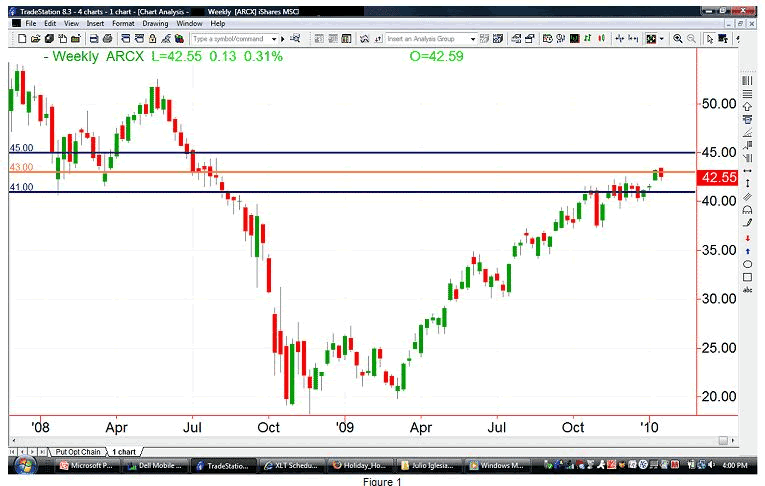Long Call Butterfly_1
Post on: 8 Апрель, 2015 No Comment

The Long Call Butterfly Spread
Andrea Kramer (akramer@sir-inc.com)
Some options strategies are forgiving; others require precise predicting ability. The long call butterfly spread is a strategy requiring the utmost accuracy.
The Strategy
Who should tune in? The long call butterfly spread is generally employed by investors expecting little volatility from the underlying stock in the near term. The strategist should have a target price in mind for the security at options expiration, as precision is required to profit from this play. The butterfly spread is generally neutral, but can be skewed to the bullish or bearish side by altering the strike prices or utilizing puts instead of calls.
How does it work? Once the investor has singled out the stock, she would purchase one in-the-money call and one out-of-the-money call. Simultaneously, the trader would sell two at-the-money calls at the aforementioned �target� strike. In essence, the butterfly spread is a combination of a long call spread and a short call spread, with the two strategies merging at the sold strike. All of the options should have the same expiration month, with a resulting net debit to initiate the trade.
What�s in it for me? The objective is for the underlying shares to finish at the sold call strike at options expiration. When this occurs, both the sold calls will expire worthless, allowing the investor to pocket the premium received from writing the two options. Meanwhile, the spread strategist can capture the intrinsic value of the purchased lower-strike call, which would ideally outweigh the premium paid for the higher-strike call. Nevertheless, the maximum potential profit for the long call butterfly spread is limited, and can be calculated by subtracting the lowest-strike call from the sold call strike, minus the initial net debit.
What do I have to lose? One of the primary appeals of the long call butterfly spread is that risk is minimal. In fact, the most the investor can possibly lose is the premium paid to initiate the trade. However, in order to avoid forfeiting the net debit, the spread strategist needs the underlying shares to finish between two breakeven rails at options expiration: the lower-strike call plus the net debit paid, and the higher-strike call less the net debit paid.
(Don�t forget to include any margin requirements, brokerage fees or commission costs in your calculations. )
For Example
Meet Bud � a seasoned option speculator who has kept close tabs on stock XYZ. The shares have remained relatively close the round-number $50 level in recent months, and Bud thinks the security will stay range-bound in the short-to-intermediate term. As such, he opts to roll the dice on his prediction by implementing the limited-risk/limited-reward long call butterfly spread on XYZ.
To initiate the trade, Bud purchases the in-the-money December 40 call for $11, as well as the out-of-the-money December 60 call for $2. In addition, he simultaneously sells two at-the-money December 50 calls for $5 each, or $10 total. Since the combined premium paid for the 40- and 60-strike calls outweighs the premium received from writing the 50-strike calls, Bud�s spread results in a net debit of $3 ([$11 + $2] � [$5 x 2]).
To avoid a loss, Bud needs the shares of XYZ to remain pinned between two breakeven rails by December options expiration: $43 (40 + $3) and $57 (60 — $3).
Bud�s ultimate goal is for XYZ to finish exactly at the $50 level when December-dated options expire. In this instance, his sold calls would expire worthless, allowing him to retain the combined $10 received from the sale. Meanwhile, his December 40 strike would finish in the money, overshadowing the relatively small hit incurred from the now-worthless out-of-the-money December 60 call. Nevertheless, the most Bud can hope to make on the play is capped at $7 ([50 � 40] — $3).
Before You Begin�
In conclusion, investors embarking on this option-trading journey should target range-bound stocks with a lack of potential momentum-inducing catalysts (i.e. � earnings, drug-trial data, etc.) to spark a significant move higher or lower. Furthermore, while the reduced risk of the long call butterfly spread can be quite appealing, the odds of accurately pinpointing a stock�s short-term trajectory � as well as the maximum potential gain on the play � are quite slim. As such, only veteran option traders with a skill for precision should try caging a profit with the butterfly.














